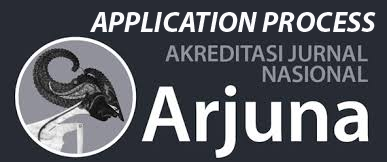Kontribusi Kegemukan dan Resistensi Insulin dalam Perkembangan Sindrom Ovarium Polikistik: Suatu Kajian Pustaka
DOI:
https://doi.org/10.59841/jumkes.v3i2.2581Keywords:
hyperandrogenism, infertility, insulin resistance, obesity, overweight, Polycystic Ovary SyndromeAbstract
Polycystic Ovary Syndrome (PCOS) is a complex endocrine disorder affecting reproductive-age women and is closely associated with metabolic disturbances such as overweight and insulin resistance. More than 50% of women with PCOS are overweight, which exacerbates ovulatory dysfunction and increases androgen levels. Insulin resistance, found in approximately 50% of PCOS patients—even those with normal body weight—triggers hyperinsulinemia that stimulates androgen production and suppresses ovulation. This study aims to analyze the contribution of overweight and insulin resistance to the development of PCOS through a literature review approach. Scientific articles were retrieved from databases such as PubMed and Google Scholar, focusing on publications from the last five years. The findings indicate that overweight and insulin resistance mutually reinforce hormonal and ovulatory dysfunction typical in PCOS patients. Recent studies show that higher body mass index (BMI) and elevated HOMA-IR levels are strongly associated with menstrual irregularities, hyperandrogenism, and reduced quality of life. In conclusion, overweight and insulin resistance are two major contributing factors to PCOS pathogenesis and influence reproductive success. Clinical management should consider a comprehensive approach targeting both factors through lifestyle interventions and pharmacological therapy.
References
Abbott DH, Dumesic DA, Levine JE. Hyperandrogenic origins of polycystic ovary syndrome - implications for pathophysiology and therapy. Expert Rev Endocrinol Metab. 2019 Mar;14(2):131-143. doi: 10.1080/17446651.2019.1576522. Epub 2019 Feb 15. PMID: 30767580; PMCID: PMC6992448.
Barthelmess, E. K., & Naz, R. K. (2023). Polycystic ovary syndrome: current status and future perspective. Frontiers in Endocrinology, 14, 1165342. https://doi.org/10.3389/fendo.2023.1165342
Bril F, Ezeh U, Amiri M, Hatoum S, Pace L, Chen YH, Bertrand F, Gower B, Azziz R. Adipose Tissue Dysfunction in Polycystic Ovary Syndrome. J Clin Endocrinol Metab. 2023 Dec 21;109(1):10-24. doi: 10.1210/clinem/dgad356. PMID: 37329216; PMCID: PMC10735305.
Calcaterra V, Verduci E, Cena H, Magenes VC, Todisco CF, Tenuta E, Gregorio C, De Giuseppe R, Bosetti A, Di Profio E, Zuccotti G. Polycystic Ovary Syndrome in Insulin-Resistant Adolescents with Obesity: The Role of Nutrition Therapy and Food Supplements as a Strategy to Protect Fertility. Nutrients. 2021 May 28;13(6):1848. doi: 10.3390/nu13061848. PMID: 34071499; PMCID: PMC8228678.
Cena H, Chiovato L, Nappi RE. Obesity, Polycystic Ovary Syndrome, and Infertility: A New Avenue for GLP-1 Receptor Agonists. J Clin Endocrinol Metab. 2020 Aug 1;105(8):e2695–709. doi: 10.1210/clinem/dgaa285. PMID: 32442310; PMCID: PMC7457958.
Christ, J.P.; Cedars, M.I. Current Guidelines for Diagnosing PCOS. Diagnostics 2023, 13, 1113. https://doi.org/10.3390/ diagnostics13061113
Dapas M, Dunaif A. Deconstructing a Syndrome: Genomic Insights Into PCOS Causal Mechanisms and Classification. Endocr Rev. 2022 Nov 25;43(6):927-965. doi: 10.1210/endrev/bnac001. PMID: 35026001; PMCID: PMC9695127.
Dapas, M., Lin, F. T. J., Nadkarni, G. N., Sisk, R., Legro, R. S., Urbanek, M., ... & Dunaif, A. (2022). Distinct subtypes of polycystic ovary syndrome with novel genetic associations: An unsupervised machine learning approach. PLOS Medicine, 19(1), e1004053. https://doi.org/10.1371/journal.pmed.1004053
Deswal R, Narwal V, Dang A, Pundir CS. The Prevalence of Polycystic Ovary Syndrome: A Brief Systematic Review. J Hum Reprod Sci. 2020 Oct-Dec;13(4):261-271. doi: 10.4103/jhrs.JHRS_95_18. Epub 2020 Dec 28. PMID: 33627974; PMCID: PMC7879843.
Di Dalmazi, G., Pagotto, U., Pasquali, R., & Vicennati, V. (2022). Insulin and androgen excess: implications for the polycystic ovary syndrome. The Lancet Diabetes & Endocrinology, 10(2), 95–106. https://doi.org/10.1016/S2213-8587(21)00278-0
Dokras, A., Stener-Victorin, E., Yildiz, B. O., Li, R., Ottey, S., & Shah, D. (2020). Androgen excess and polycystic ovary syndrome: implications for cardiometabolic and reproductive health. The Lancet Diabetes & Endocrinology, 8(9), 754–770. https://doi.org/10.1016/S2213-8587(20)30109-0
Dumesic, D. A., Oberfield, S. E., Stener-Victorin, E., Marshall, J. C., Laven, J. S., & Legro, R. S. (2020). Scientific statement on the diagnostic criteria, epidemiology, pathophysiology, and molecular genetics of polycystic ovary syndrome. Endocrine Reviews, 41(4), 538–576. https://doi.org/10.1210/endrev/bnaa010
Elkind-Hirsch KE, Chappell N, Shaler D, Storment J, Bellanger D. Liraglutide 3 mg on weight, body composition, and hormonal and metabolic parameters in women with obesity and polycystic ovary syndrome: a randomized placebo-controlled-phase 3 study. Fertil Steril. 2022 Aug;118(2):371-381. doi: 10.1016/j.fertnstert.2022.04.027. Epub 2022 Jun 13. PMID: 35710599.
Escobar-Morreale, H. F. (2018). Polycystic ovary syndrome: definition, aetiology, diagnosis and treatment. Nature Reviews Endocrinology, 14(5), 270–284. https://doi.org/10.1038/nrendo.2018.24
Gasner A, Rehman A. Primary Amenorrhea. [Updated 2023 Dec 20]. In: StatPearls [Internet]. Treasure Island (FL): StatPearls Publishing; 2025 Jan-. Available from: https://www.ncbi.nlm.nih.gov/books/NBK554469/
Hedayat, K. M., Lapraz, J.-C., & Schuff, B. (2020). Menstruation disorders: Oligomenorrhea (Chapter 34, pp. 227–231). In K. M. Hedayat & J.-C. Lapraz (Eds.), The theory of endobiogeny (Vol. 4: Bedside handbook). Academic Press. https://doi.org/10.1016/B978-0-12-816965-0.00034-2
Hruby A, Hu FB. The Epidemiology of Obesity: A Big Picture. Pharmacoeconomics. 2015 Jul;33(7):673-89. doi: 10.1007/s40273-014-0243-x. PMID: 25471927; PMCID: PMC4859313.
Hu KL, Gan K, Ying Y, Zheng J, Chen R, Xue J, Wu Y, Liu Y, Zhu Y, Xing L, Zhang D. Oligo/Amenorrhea Is an Independent Risk Factor Associated With Low Ovarian Response. Front Endocrinol (Lausanne). 2021 Jun 9;12:612042. doi: 10.3389/fendo.2021.612042. PMID: 34177795; PMCID: PMC8220146
Hu L, Ma L, Xia X, Ying T, Zhou M, Zou S, Yu H, Yin J. Efficacy of Bariatric Surgery in the Treatment of Women With Obesity and Polycystic Ovary Syndrome. J Clin Endocrinol Metab. 2022 Jul 14;107(8):e3217-e3229. doi: 10.1210/clinem/dgac294. PMID: 35554540; PMCID: PMC9282367.
Kim, J., Montagnani, M., & Koh, K. K. (2020). Reciprocal relationships between insulin resistance and endothelial dysfunction: Molecular and pathophysiological mechanisms. Circulation Research, 126(7), 926–948. https://doi.org/10.1161/CIRCRESAHA.119.315816
Lim, S. S., Davies, M. J., Norman, R. J., & Moran, L. J. (2019). Overweight, obesity and central obesity in women with polycystic ovary syndrome: A systematic review and meta-analysis. Human Reproduction Update, 25(2), 168–186. https://doi.org/10.1093/humupd/dmy036
Mohapatra I, Samantaray SR. BMI and Polycystic Ovary Syndrome: Demographic Trends in Weight and Health. Cureus. 2024 Mar 3;16(3):e55439. doi: 10.7759/cureus.55439. PMID: 38567220; PMCID: PMC10986768.
Morales, A. J., Laughlin, G. A., & Yen, S. S. C. (2021). Hyperinsulinemia in polycystic ovary syndrome: a key link to androgen excess and ovarian dysfunction. Journal of Clinical Endocrinology & Metabolism, 106(2), e872–e881. https://doi.org/10.1210/clinem/dgaa836
Neven, A., Dewailly, D., Lambert-Messerlian, G., & Laven, J. S. E. (2022). The role of insulin resistance in the pathophysiology of polycystic ovary syndrome. Reproduction, 164(5), F37–F52. https://doi.org/10.1530/REP-21-0624
Rotterdam ESHRE/ASRM-Sponsored PCOS Consensus Workshop Group. Revised 2003 consensus on diagnostic criteria and long-term health risks related to polycystic ovary syndrome. Fertil Steril. 2004 Jan;81(1):19-25. doi: 10.1016/j.fertnstert.2003.10.004. PMID: 14711538.
Saltiel, A. R., & Olefsky, J. M. (2017). Inflammatory mechanisms linking obesity and metabolic disease. Journal of Clinical Investigation, 127(1), 1–4. https://doi.org/10.1172/JCI92035
Unluhizarci K, Karaca Z, Kelestimur F. Role of insulin and insulin resistance in androgen excess disorders. World J Diabetes. 2021 May 15;12(5):616-629. doi: 10.4239/wjd.v12.i5.616. PMID: 33995849; PMCID: PMC8107978.
Venkatesh SS, Ferreira T, Benonisdottir S, Rahmioglu N, Becker CM, Granne I, Zondervan KT, Holmes MV, Lindgren CM, Wittemans LBL. Obesity and risk of female reproductive conditions: A Mendelian randomisation study. PLoS Med. 2022 Feb 1;19(2):e1003679. doi: 10.1371/journal.pmed.1003679. Erratum in: PLoS Med. 2022 Sep 2;19(9):e1004095. doi: 10.1371/journal.pmed.1004095. PMID: 35104295; PMCID: PMC8806071.
World Health Organization. (2022). Obesity and overweight. https://www.who.int/news-room/fact-sheets/detail/obesity-and-overweight
Zhang H, Wang W, Zhao J, Jiao P, Zeng L, Zhang H, Zhao Y, Shi L, Hu H, Luo L, Fukuzawa I, Li D, Li R, Qiao J. Relationship between body composition, insulin resistance, and hormonal profiles in women with polycystic ovary syndrome. Front Endocrinol (Lausanne). 2023 Jan 9;13:1085656. doi: 10.3389/fendo.2022.1085656. PMID: 36699018; PMCID: PMC9869160.
Downloads
Published
How to Cite
Issue
Section
License
Copyright (c) 2025 Jurnal Mahasiswa Ilmu Kesehatan

This work is licensed under a Creative Commons Attribution-ShareAlike 4.0 International License.










